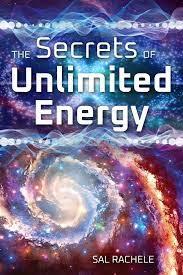
If Nicola Tesla discovered a way to harness unlimited energy for all humans, and if the mechanisms are small enough, then electric cars are going to be very viable. Maybe Musk has a long range plan. Batteries are the major stumbling block to reliable electric cars. No batteries problem solved.
(media.greatawakening.win)
- N C S W I C -

*** Ed Note: On July 10, 1932 in the Brooklyn Eagle, Tesla said “I have harnessed the cosmic rays and caused them to operate a motive device.” Given the timeframe Savo indicates, this may well be the basis for his profound statement. ***** Tesla’s Pierce Arrow >
...Sometime in 1931, Dr Tesla took Peter to Buffalo, NY for the unveiling and final testing of a new kind of automobile. Dr. Tesla acted somewhat mysteriously about it, would tell Peter nothing in advance, and even after he had seen the car, answered some of his questions with “Don’t ask any questions”.
The car turned out to be a standard Pierce Arrow, with the engine removed and certain other components installed instead. The standard Clutch, gear box and drive train remained installed.
Under the hood, there was a brushless electric motor, connected to the engine [?]. The engine was said to measure 40” long by 28” diameter. However, some of these figures may be estimates. Tesla would not divulge who made the motor.
< Tesla’s Power Box >
Set into the dash was a “power receiver” consisting of a box measuring about 24” long by 10” wide by 6” high, containing 12 radio tubes. Three of these tubes were model 70-L-7. A vertical antenna consisting of a 6-foot rod, was installed and connected to the power receiver.
The receiver, in turn, was connected to the motor by two heavy, conspicuous cables. Two “spindles” (rods?) about 1/4” diameter by 3” long protruded from the receiver towards the driver. Tesla pushed these in before starting and said: “We now have power”. These spindles were in line with the two power cables coming out of the back of the unit and presumable worked two separate power switches.
There was a 12-volt Willard battery installed in the car, but it was for the lights only and much too small to run the car. In any case, the motor was an AC motor.
Peter said that Dr. Tesla had built the power receiver himself in his hotel room, and carried it to Buffalo. The motor was built for him by some unknown company. The motor was completely enclosed and when Peter first saw it, it was stopped. Later, after the engine was running, Dr Tesla asked Peter to look under the hood to check whether the fan was running. Peter asked what the fan was for and was told that “The engine is running pretty hot”. Maximum engine speed was 1800 rpm. Power rating was 80 hp.
< A Test Drive >
To start the car, Dr Tesla handed Peter an ignition-type key. Peter inserted it and a green light came on, on the dash. Dr Tesla thereupon said: “The engine is now in motion”. The engine could not be heard from the driver's seat at all. When listening under the hood with the engine on, there was a slight hum. The standard accelerator pedal was used to control engine speed. Clutch, brake and gearshift were unchanged.
The instruments on the dash appeared to be standard ones. However, there was a voltmeter which was used to measure output of the receiver. Dr Tesla commented that the receiver had enough reserve power so that you could drive the car next to a house, connect the wiring, and light up the whole house. There was also some kind of hydraulic pressure gauge on the dash. Peter asked its purpose but Dr Tesla would not tell him.
Peter drove the car for about 50 miles at speeds up to 90 mph (the speedometer was calibrated to 120 mph). Power seemed at least as good as the normal Pierce Arrow engine. Acceleration in second gear seemed particularly good. Shifting gears seemed somewhat smoother than with a normal engine.
https://teslauniverse.com/nikola-tesla/articles/nikola-teslas-electric-car-folklore-or-historical-fact
Wow! Great info!
Tube info: https://www.radiomuseum.org/tubes/tube_70l7.html
Fascinating!!